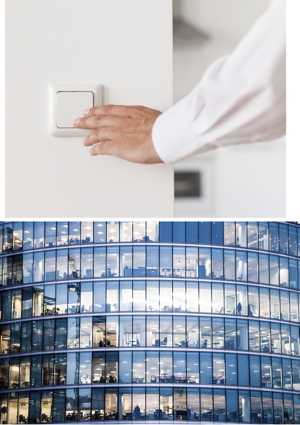Let’s remind ourselves of the basics of control

Malcolm Anson, president of the Building Controls Industry Association, says that we should focus on getting the basics right to see the full benefits of building controls and BEMS in the long-term.
In a recent issue of MBS (February 2016), Dr Kerry Mashford of the National Energy Foundation wrote about her organisation's work identifying 'poor operating practices' in buildings. The list was somewhat depressing, because it covered so many basic issues that designers and installers should be getting right first-time.
Since building controls play such an important role in the efficient operation of buildings, they can also be the cause of problems with excess energy use, occupant discomfort or generally poor operation of building-services systems such as air conditioning or heating, if they are not designed or installed with care.
The BCIA takes these issues very seriously. The association has focused on ensuring that our industry's installers are properly qualified with the development of the Building Controls Professional Assessment (BCPA). This has been designed with the aim of creating a building controls equivalent of the electricians' AM2. We have also developed our training courses and are delivering them more widely across the country.
However, we also need to educate building owners and managers about how they can ensure the building-control systems they need to run an efficient building are actually installed. Time and again, building controls fall foul of value engineering because contractors shave off costs at the early stage of a project. Examples of this include reducing the number of sensors on a project or using pre-packaged equipment that is not generally controlled or cannot easily interface with other items to create an efficient system.
These may sound like small items, likely to cost only tens of pounds, not hundreds. However, sensors are the eyes and ears of a BEMS.
For example, removing daylight sensors may mean that the BEMS won't be able to turn off lighting when it's not required. Leaving occupants to manage air conditioning in a space manually almost inevitably leads to systems being left on when not required. CO2 and occupancy sensors can identify unoccupied space and ensure cooling, heating or lighting are switched off when not required — but only if those sensors are actually there.
Not interfacing the underfloor heating with the boiler primary plant is another common situation. Why have boilers cycling when there is no demand?
Dr Mashford also raised the issue of 'complex controls' and the fact that building managers don't receive clear instructions on how the controls work. The fact is that controls become more complex because initial designs are changed. Shortcuts caused by value engineering lead to compromises that create the requirement for more human interaction and confusion about how things work.

Today's building controls can take a lot of the burden of efficient operation out of the hands of occupants — leaving engineers to take care of issues such as set points on temperature, operating times or even energy use. Graphical displays and user interfaces can be made simple for building owners to use, but only if time and budget are allowed in the construction process for effective controls design and handovers.
Although these issues are at the design stage of new building projects, they lead to problems that last for years. Existing buildings can miss out on the benefits of good controls for decades, and inefficiencies simply mount up over time. The National Energy Foundation recommends regular building reviews and site inspections, and this is something the BCIA would recommend for the building controls and BEMS. It may be useful to take a look at BS EN15232 ‘Energy performance of buildings. Impact of building automation, controls and building management’.
This is a standard the BCIA has talked about a lot, and it is of great help when specifying a new BEMS or even when reviewing an existing controls system. The list of technologies is brand neutral, and the standard shows the cumulative effects of different levels of control and how these impact very specifically on energy use in the building.
Of course, standards won't solve everything. The BCIA believes that we need to work with other parts of the building-services and construction sector to educate and explain what controls technology brings to the table in terms of building performance. That's why we are a supporter of the Building Services Summit taking place on 23 November at the British Library. Along with other leading associations, we will be discussing the best way forward to deliver buildings that operate as intended — and listening to views from across the industry.
As we enter the era of the Internet of Things it is easy to become excited about the potential of new technology. But we all need to focus on getting the basics right first.
Malcolm Anson is president of the Building Controls Industry Association and managing director of Clarkson Controls.







